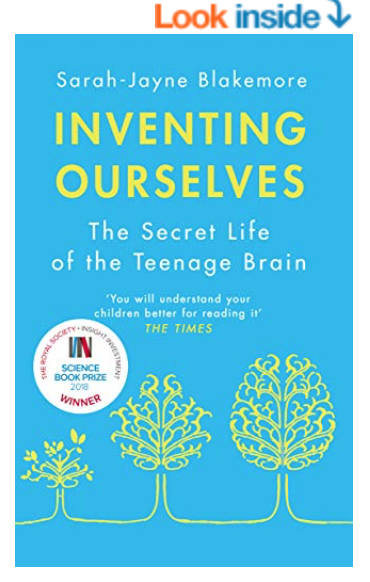Reading “Inventing ourselves – the secret life of the teenage brain” by Sarah-Jayne Blakemore; meeting 2

The ‘Follow the Arrows’ reading group* is a new initiative, helping bridge the current gap between published evidence and school practices around behaviour, inclusion, mental health and wellbeing in schools.
This week we were discussing chapters 5 Inside the living brain, 6 The ever plastic brain, 7 Social mind, social brain, and 8 Understanding other people.
The book covered a broad sweep of neuroscience in these chapters and raised questions about how much Government is ‘guided by the science’ in particular on the brain biology of adolescents presented here.
These ideas about brain plasticity and the existence of the social brain, combined with improved understanding children’s social and emotional development, informed projects like Sure Start, Family Conferencing, Signs of Safety, NSPCC, and the Primary National Strategy ‘Focusing on solutions; a positive approach to improving behaviour’ all of which have their roots in the Solution Focused theory of change and solution focused brief therapy. However this evidence was put to one side, initially by Michael Gove in his time as Education Minister, under the influence of Dominic Cummings, and subsequently influenced by other advisers on behaviour and mental health in schools.
The broadly Behaviourist approach and the adherence to rewards and punishments, emerging as Strict Discipline and zero-tolerance, elevate the simplistic consistency of strategies focused on the requirements of the organisation (school-shaped children) over and above child-centred teaching and learning which work with the complexity of the child and their developmental pathway (child-shaped schools), as researched and described by Blakemore and others.
Reading group members commented on the trend in initial teacher training towards this narrowness over the last decades, and recently in schools which have taken on the DfE approved approach. Those with a background in science felt more comfortable with the science in these chapters; for others there is a need to an intermediate style of book, to simplify the science further while maintaining the clarity of links between evidence and school practice.
The issue of the high cost of the current punitive approach to behaviour which seems to be ignorant of the evidence which informs other more inclusive ways of working, was raised.
In a hopeful move, the current DfE investment in the work going on in Lincolnshire to eliminate exclusion, which is informed by evidence and is a clear alternative to current DfE policy, shows that evidence-informed progress is possible. Additionally, group members reported on schools that have developed approaches, including my work with Solutions Focused Coaching in schools, which take into account the evidence as it emerges. This can be seen as a social, public health approach to young people’s learning, specifically learning about emotions and behaviour.
As always, a group member gave a summary of the session;
‘The more I read about the complexity of the brain and its plasticity, the more I think that adolescents need structure, but less a straightjacket and more flexible guidelines. We shouldn’t lose sight of what’s working with young people at risk of exclusion to get them on track for success. New approaches can come back in on this evidence; schools have gone through zero-tolerance and failed to find the benefits, and are looking for alternatives.’
* ‘Follow the Arrows’ is an open access group with regular meetings over internet video. You’re very welcome to join us for an hour or so of reflection every fortnight. Currently we’re reading Sarah-Jayne Blakemore’s book, considering four chapters at each meeting.
The reading group includes educators from a wide background; mainstream and special school workers, carers, parents, advisers, charity and Children’s Services staff. We all have an interest in finding accessible evidence to provide a firm basis for our work, looking below and beyond the headlines for the kind of information that can transfer to schools, strengthening the two-way conversation between research and practice.
Our next meeting will cover the remaining four chapters of the book

